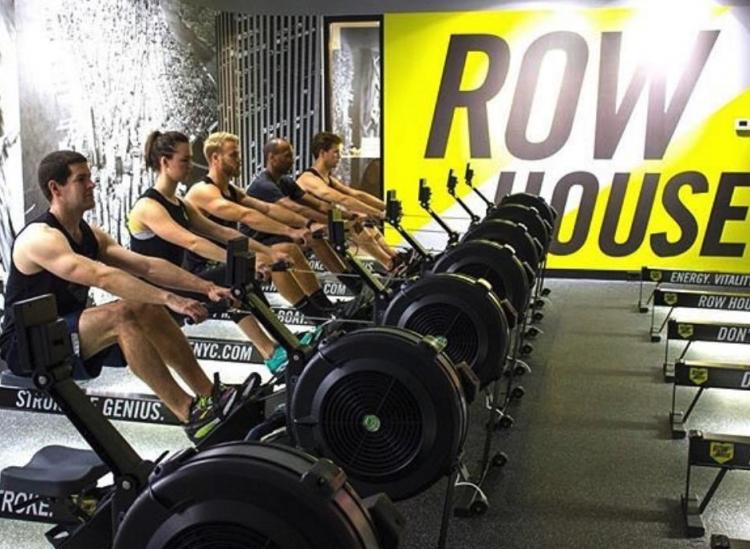5 Things You Should Know Before Your First Rowing Class

@rowhousenyc
If you’re ready to take your cardio to the next level — and get a total-body workout in the process — it might be time to give a rowing class a try. Gym chains and boutique studios across the country have jumped on the exercise trend, offering people of every fitness level a routine to build both strength and endurance simultaneously.
But that doesn’t mean waltzing into one of these classes for the first time isn’t incredibly intimidating. Plenty of people have never used a rowing erg (the official name for the rowing machine) before, let alone logged solid time on one to feel truly comfortable with the exercise. But that’s why we’re here — to tell you all the things you should know before attending your first rowing class.
1. Ask your instructor to help you set up properly.
Starting in the correct position on the rowing erg is critical to not only getting the workout you desire, but also avoiding unwanted injuries. Luckily, the setup is relatively simple. You just need to focus on your feet. Slide the adjustable, vertical heel holder up or down until the strap that reaches across your foot aligns with your shoelaces closest to your toes. Then pull the strap so that your feet are locked in securely (but not so much that your feet feel uncomfortable).
2. Familiarize yourself with proper rowing form.
There are four key components to the rowing movement: catch, drive, finish and recovery.
The catch is the starting point of any row stroke, which is when your seat is approximately six inches away from your heels with your legs bent. Your knees should track directly above your ankles, and your arms should be extended with your elbows to the outside of your knees and hands loosely holding the handlebars. It’s okay to hinge forward a bit, but keep your core engaged and your shoulders broad.
The drive is when you push off with your leg strength. Drive with the balls and heels of your feet so that your hips shoot straight back and your legs straighten. Keep your arms straight without locking your elbows, and keep your torso slightly over your legs until the very end of the drive when your legs are straight (but also not locked at the knees).
The finish engages your abs and back as you pull the handlebars in toward the top of your ribcage. Keep your core tight and back tall as you lean back at a 45-degree angle and bend your elbows back and away from your body. Your shoulders should remain open the entire time.
The recovery is what brings you back to the starting catch position. Move slowly and with control, pushing your hands away from your body, hinging your torso over your legs again and bending your knees so that you slide all the way forward.
3. Choose an erg at the front of the class.
We know, we know, being front and center when you think you’re a total amateur can be the epitome of nerve-wracking. But in a rowing class, this placement accomplishes several things. First, it places you next to some seasoned rowers who know the pace of the class well and give you a good example to follow. Second, it puts you right in front of the instructor so you can get more hands-on assistance as needed. Third, it removes all potential distractions from your direct line of sight so you can focus entirely on you and your workout.
4. Be ready to jump off the erg at any moment.
That’s right — you don’t just sit there and row along for all 45 minutes of class. The vast majority of rowing classes implement an interval training style, meaning you’ll alternate between different rowing styles and bodyweight strength training moves on the floor. You’ll get in the groove with some steady rowing or hustle through a rowing sprint just so you can hop off and dive right into some jump squats, push-ups and planks. The interval and circuit designs will depend on your instructor, but get ready for some creative total-body exercises that will leave you drenched in sweat.
5. Don’t be afraid to modify moves as a beginner.
There is a lot going on in a rowing class, so listen to your body and follow along at your own pace. When everyone else is sprinting their hearts out, focus on your rowing form first and speed second. When everyone else is jumping through burpee after burpee, know that it’s okay to do half as many as your classmates so long as you’re doing them correctly and safely. At the end of the day, this class is supposed to help you build strength — not kill you on the first go ’round. Plus, all of your rowing neighbors will be so happy you’ve joined their community regardless of how many meters you logged on the erg that morning.











